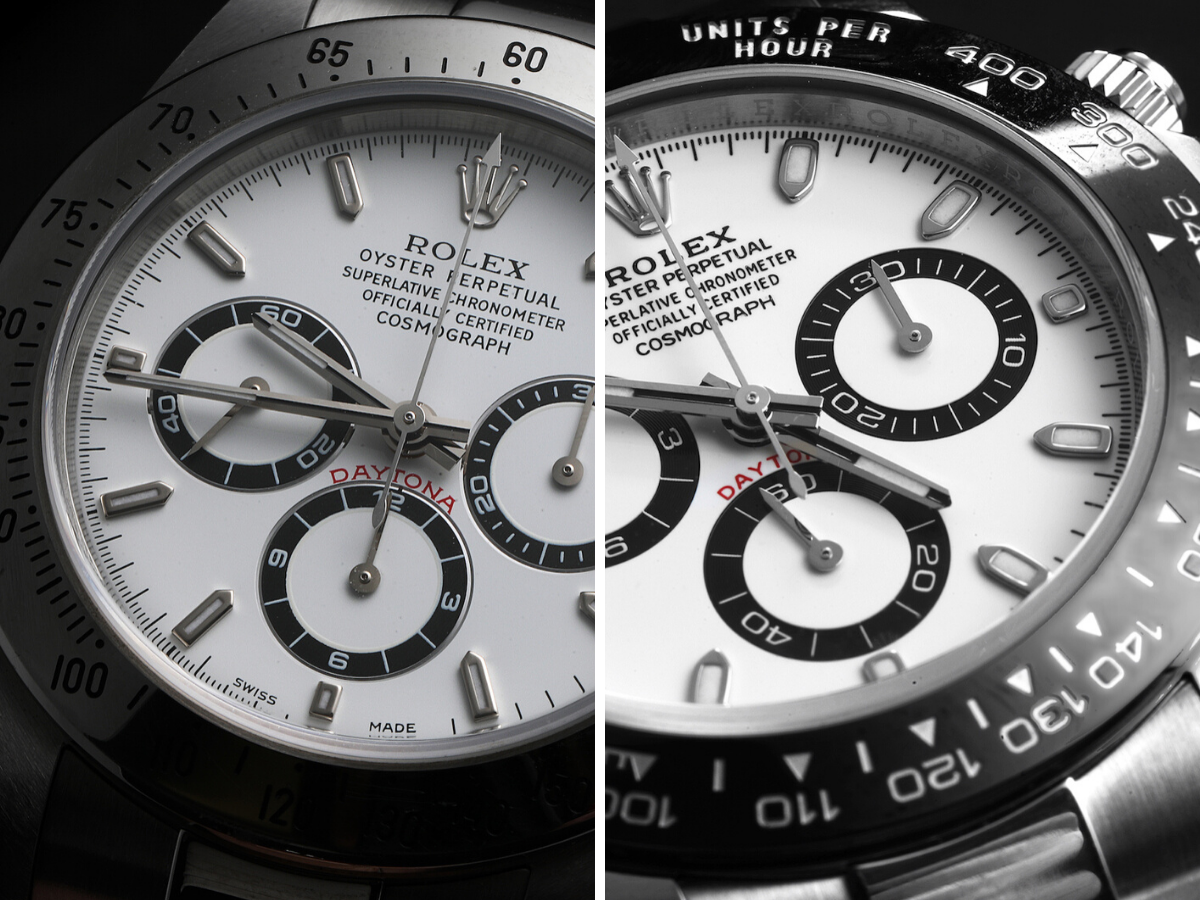The Rolex Daytona stands as horological royalty, representing the pinnacle of luxury sports chronographs. Since its inception in 1963, this legendary timepiece has evolved from a professional racing tool to the ultimate collector’s grail. Today’s market presents enthusiasts with a compelling choice between two distinct generations: the Ceramic Daytona vs Steel Daytona. Moreover, this comparison reveals fundamental differences in materials, aesthetics, and market positioning that define modern luxury watch collecting. Furthermore, understanding these distinctions helps buyers make informed decisions in an increasingly competitive market where waiting lists stretch years and secondary market premiums soar beyond imagination.
Design and Aesthetic Differences
The most striking difference between these models lies in their bezel materials and resulting visual impact. Steel Daytonas, exemplified by the discontinued reference 116520, feature polished stainless steel bezels with engraved tachymetric scales. Additionally, these bezels offer a classic, vintage-inspired appearance that connects directly to the original 1963 Daytona aesthetic. However, steel bezels are prone to scratching and require regular polishing to maintain their lustrous finish.
Conversely, Ceramic Daytonas showcase Rolex’s patented Cerachrom bezel technology, which debuted on steel models in 2016 with reference 116500LN. Furthermore, these ceramic bezels feature a distinctive glossy black finish with platinum-filled numerals applied through a PVD (Physical Vapour Deposition) process. The ceramic construction creates a more contemporary, tool-watch aesthetic that appeals to modern collectors seeking cutting-edge materials. Moreover, the monobloc ceramic bezel integrates seamlessly with the steel case, creating a unified, sophisticated appearance that distinguishes it from its steel predecessor.
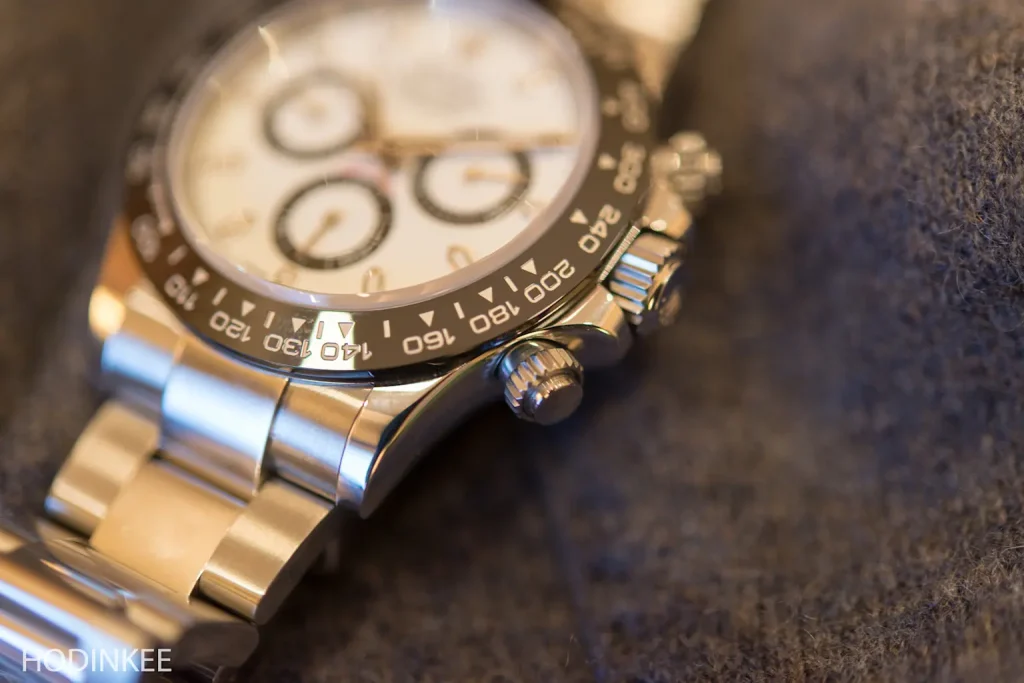
Durability and Materials
When examining long-term wearability, the Ceramic Daytona vs Steel Daytona comparison reveals significant material performance differences. Steel bezels, while beautifully polished, inevitably develop scratches and dings from daily wear. However, these scratches can be professionally polished out, allowing the watch to maintain its original appearance with proper servicing.
Ceramic Cerachrom bezels offer superior scratch resistance and complete immunity to UV fading, ensuring consistent appearance over decades. Additionally, ceramic bezels resist corrosion and maintain their deep black color indefinitely. Nevertheless, ceramic’s primary weakness lies in its brittleness – while virtually scratchproof, ceramic bezels can chip or shatter if subjected to severe impact. Furthermore, ceramic bezel replacement costs significantly exceed steel bezel repairs, making damage prevention crucial for ceramic Daytona owners.
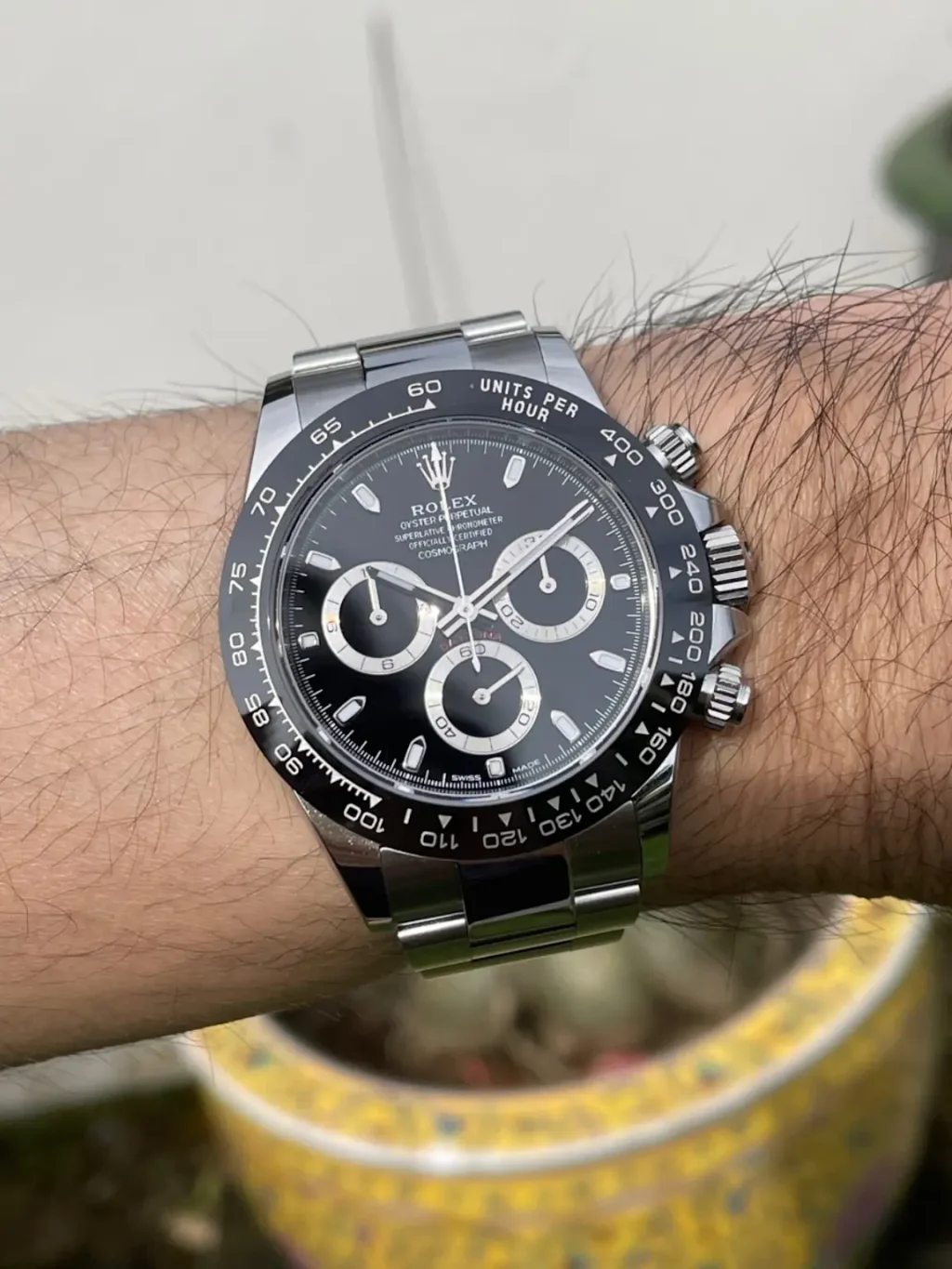
Movements and Performance
Both models share identical mechanical specifications, powered by Rolex’s exceptional Caliber 4130 chronograph movement. This in-house movement delivers 72-hour power reserve when the chronograph is inactive, and 66 hours during continuous chronograph operation. Additionally, both variants feature identical chronograph accuracy, with -2/+2 seconds per day precision certified to Superlative Chronometer standards.
The Caliber 4130 incorporates 44 jewels, Rolex’s patented Parachrom hairspring for magnetic resistance, and Paraflex shock absorbers for enhanced durability. Therefore, performance differences between ceramic and steel models remain nonexistent – the choice purely concerns external materials rather than internal mechanics. Moreover, both models offer identical 100-meter water resistance and maintain the same chronograph functionality with center seconds hand, 30-minute counter, and 12-hour counter.
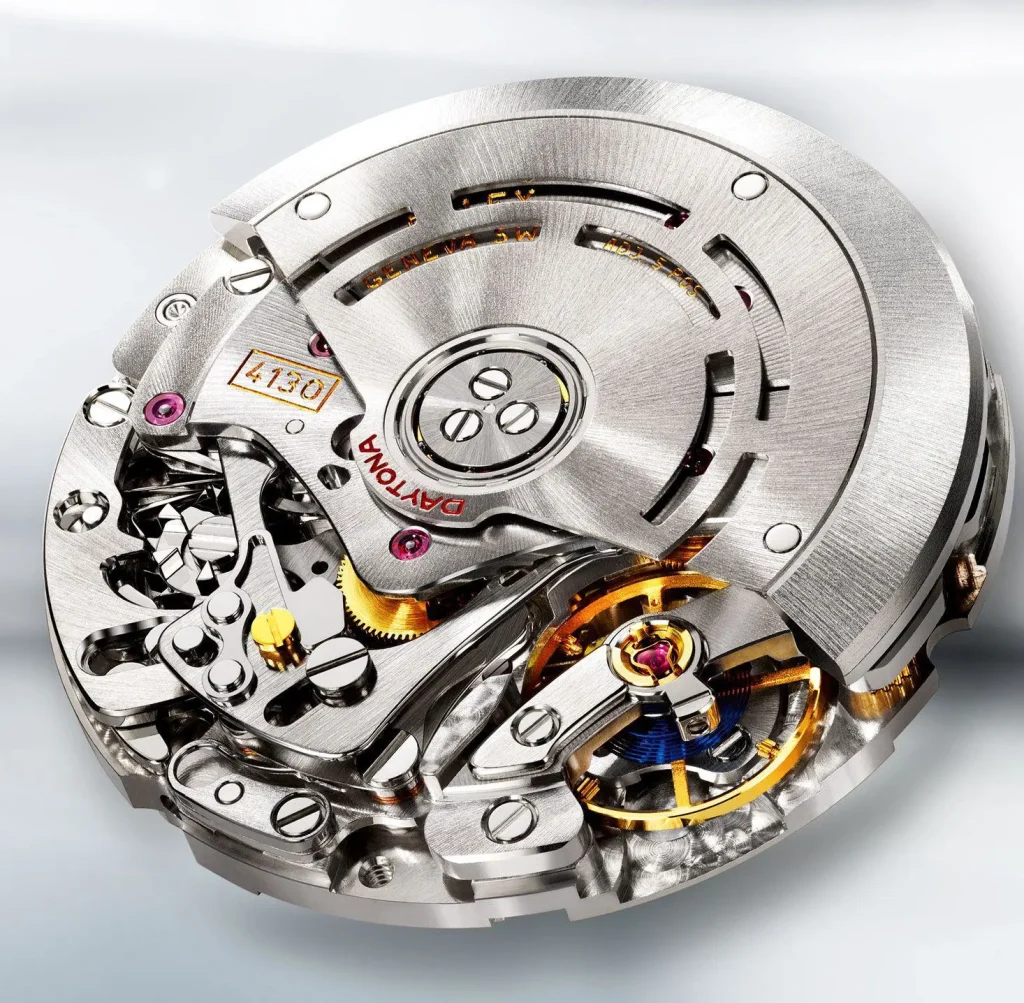
Market Price and Value Retention
The Ceramic Daytona vs Steel Daytona pricing landscape reveals fascinating market dynamics. Steel Daytonas (reference 116520) originally retailed for approximately $6,000 in 2000, increasing to $12,200 by discontinuation in 2016. Currently, these models command $20,500-$26,500 on the secondary market, representing substantial appreciation. Consequently, early steel Daytona buyers have witnessed remarkable value growth over two decades.
Ceramic Daytonas launched with higher MSRPs, initially priced at $14,800 for reference 116500LN and currently $15,500 for the updated 126500LN. However, secondary market prices tell a different story: ceramic models with black dials trade around $28,000, while white “Panda” dial versions reach $34,000. Therefore, ceramic Daytonas command higher absolute values but also carry steeper entry costs. Furthermore, the ceramic model’s shorter production history limits long-term appreciation data, though early indicators suggest strong value retention.
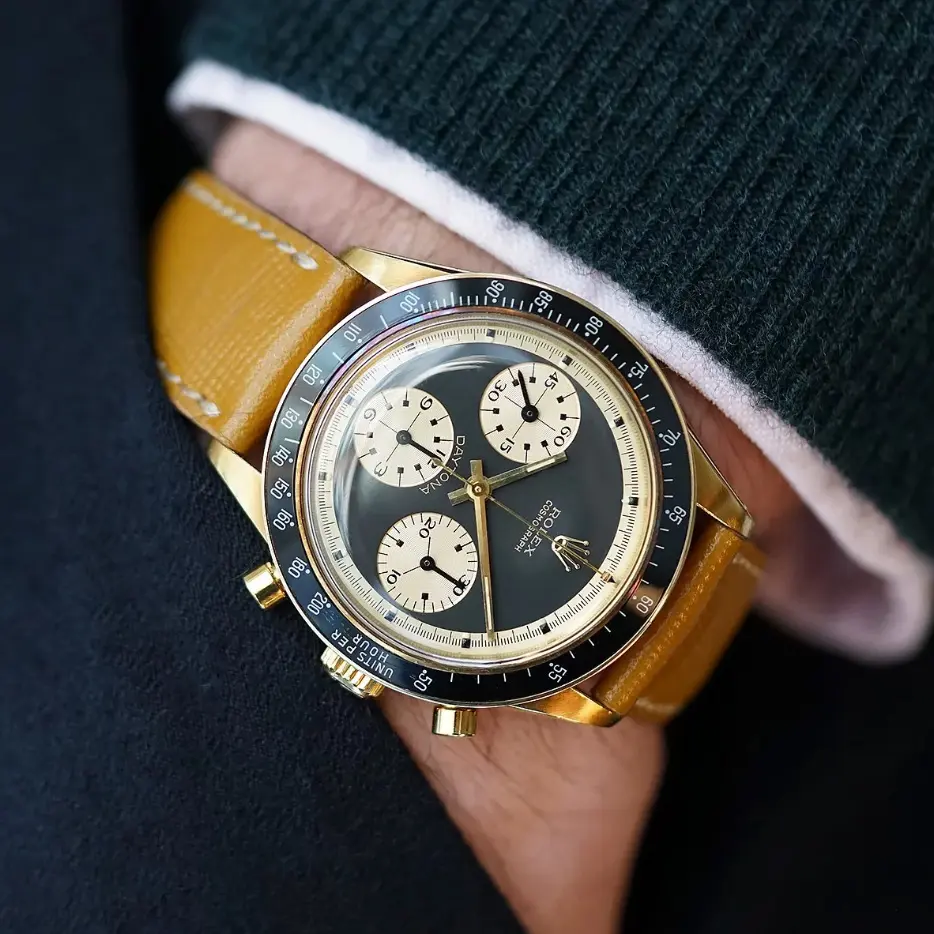
Collectibility and Icon Status
Vintage Steel Daytonas enjoy legendary status among collectors, particularly Paul Newman dial variants that achieved astronomical auction prices. Paul Newman’s personal reference 6239 Daytona sold for $17.8 million in 2017, cementing the steel Daytona’s position in horological history. Moreover, earlier steel references like 6263 and 6265 regularly achieve six-figure auction results, with exceptional examples reaching $200,000-$400,000.
Ceramic Daytonas represent modern icons in development, benefiting from contemporary scarcity and waiting list exclusivity. These models appeal to buyers seeking current production pieces with immediate wearability rather than vintage collectibles requiring careful preservation. Additionally, ceramic Daytonas have established strong secondary market premiums, indicating healthy collector interest and investment potential. However, their relatively recent introduction means long-term collectibility patterns remain unestablished compared to steel models’ proven track record.
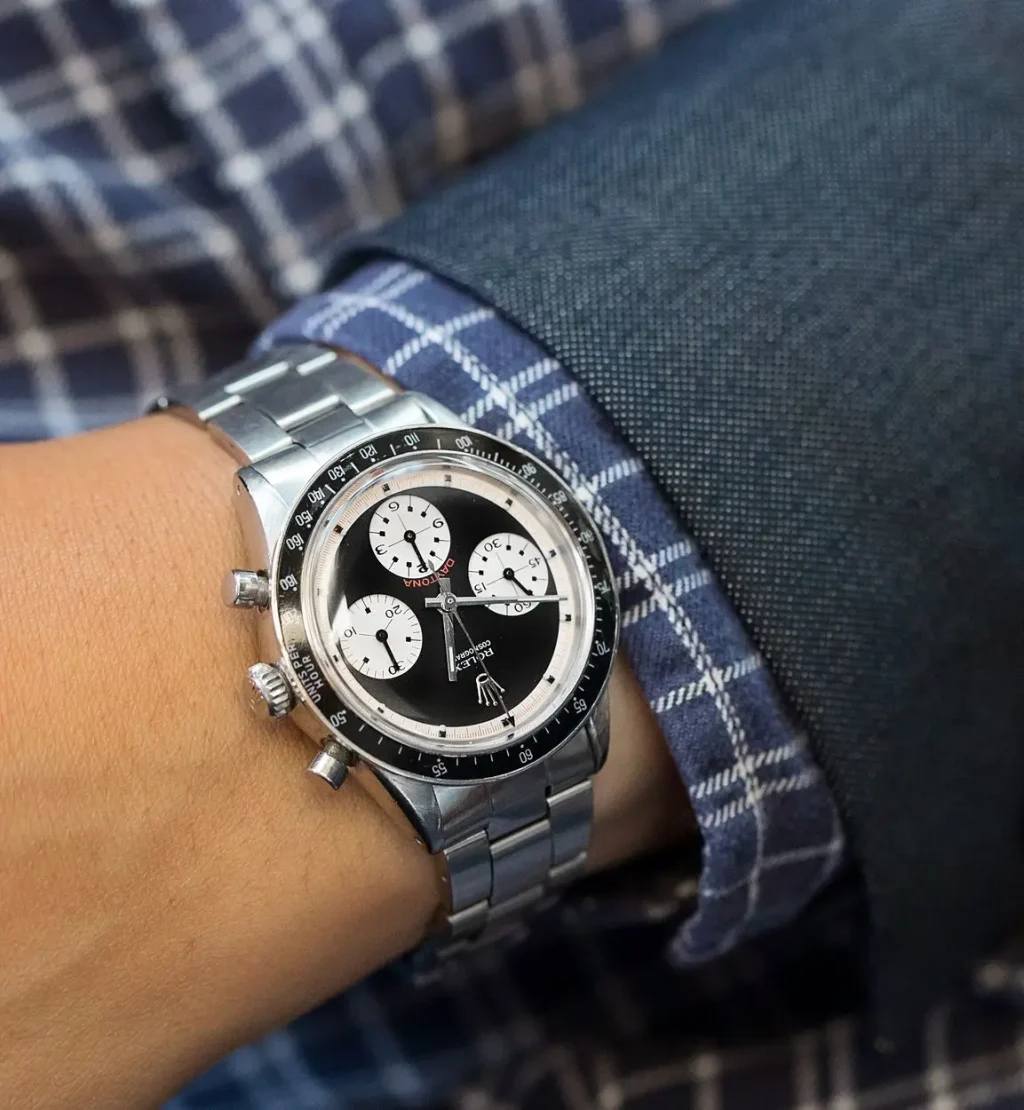
Which Daytona to Choose?
Selecting between Ceramic Daytona vs Steel Daytona depends on individual priorities and collecting philosophy. Steel Daytonas suit buyers prioritizing vintage authenticity, proven collectibility, and connection to racing heritage. These models offer established value appreciation patterns and represent the Daytona’s original aesthetic vision. Furthermore, steel models provide better entry-level access to Daytona ownership with lower acquisition costs.
Ceramic Daytonas appeal to buyers seeking modern durability, contemporary aesthetics, and current production accessibility. These models offer superior materials technology and represent Rolex’s current design direction. Moreover, ceramic Daytonas suit buyers prioritizing daily wearability without vintage preservation concerns. However, higher prices and extended waiting lists create significant acquisition barriers.
Both options offer exceptional quality and desirability – the choice ultimately depends on personal taste, budget constraints, and intended usage patterns.

Conclusion
The Ceramic Daytona vs Steel Daytona comparison reveals two distinct approaches to luxury sports chronograph design. Steel models embody vintage charm and proven collectibility, while ceramic variants represent cutting-edge materials and modern sophistication. Both generations share identical mechanical excellence through the Caliber 4130 movement, ensuring comparable performance regardless of bezel material.
Market dynamics favor both models differently: steel Daytonas offer established appreciation patterns and vintage appeal, while ceramic models provide contemporary desirability and superior durability. Ultimately, Rolex ensures both variants remain blue-chip investments worthy of serious collectors. Whether prioritizing heritage or innovation, both choices deliver the legendary Daytona experience that has captivated enthusiasts for over six decades.
M
M
S
